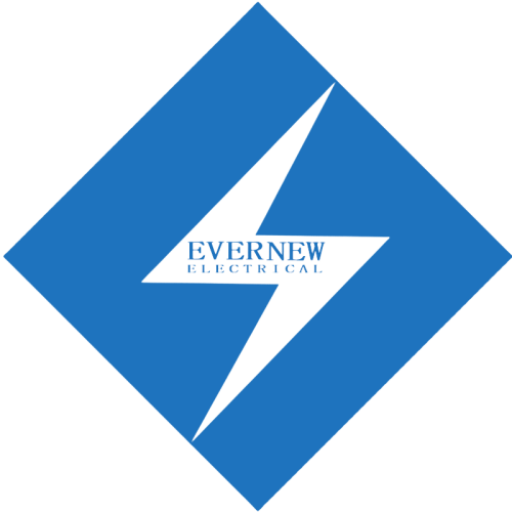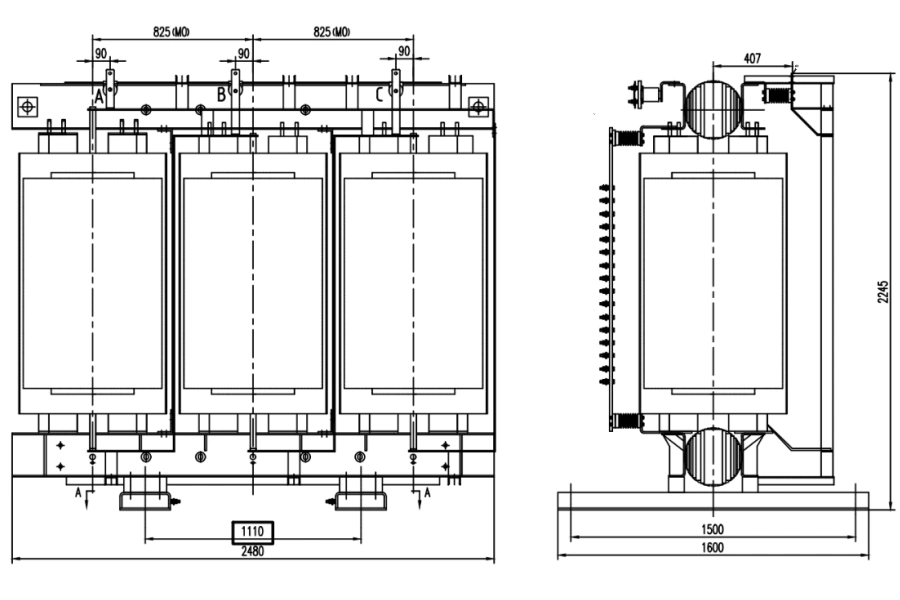In industrial electrical engineering, rectifier transformers play a crucial role in converting AC (alternating current) to DC (direct current). These specialized transformers are not just simple power devices—they are engineered to withstand unique electrical stresses and meet the needs of high-precision DC applications. Whether used in electrochemical industries, traction systems, or HVDC transmission, rectifier transformers form the backbone of many modern infrastructure systems.
This article provides a comprehensive overview of rectifier transformers, their functions, characteristics, construction materials, types (dry-type and oil-immersed), and how they differ from conventional power transformers.
What Is a Rectifier Transformer?
A rectifier transformer is a special type of transformer designed to supply power to rectifier circuits, which convert AC voltage to DC voltage. These transformers are often used in combination with semiconductor devices such as diodes or thyristors in multi-pulse rectification systems.
Unlike standard transformers that serve primarily for voltage transformation or electrical isolation, rectifier transformers are specifically engineered to handle:
Non-linear and unbalanced loads
High harmonic content
Heavy thermal and electrical stresses
Precise voltage regulation
Applications of Rectifier Transformers
Rectifier transformers are essential in numerous industries that require controlled or high-voltage DC power. Some of the most common applications include:
Electrolysis and Electrowinning (aluminum, copper, zinc industries)
Electric arc furnaces and steel manufacturing
Traction substations for railways
HVDC (High Voltage Direct Current) transmission systems
Battery charging systems
Electroplating and anodizing plants
Industrial drives and motors requiring DC supply
Each of these applications places specific performance demands on the transformer, including the ability to manage fluctuating loads and harmonics.
Key Features and Design Characteristics
Rectifier transformers are purpose-built to meet complex operational conditions. Their distinguishing features include:
1. Multi-Winding Configuration
Often designed with one or more secondary windings to feed multi-pulse rectifier bridges (e.g., 6-pulse, 12-pulse, 24-pulse), improving DC output smoothness and reducing harmonics.
2. Phase Shift Capability
Secondary windings may be configured with phase shifts to create multi-phase rectification, essential for harmonic mitigation.
3. Robust Insulation System
Insulation must be capable of withstanding high dielectric and thermal stress due to transient voltages and harmonic content.
4. Electromagnetic Shielding
To reduce eddy currents and leakage fields, shielding is often built into core and windings.
5. High Short-Circuit Strength
Because rectifier transformers serve highly inductive and sometimes fault-prone loads, mechanical strength is critical to withstand internal short circuits.
Construction Materials
High-quality materials ensure reliability and longevity under extreme operating conditions:
Core: Grain-oriented silicon steel or amorphous alloy for reduced core loss
Windings: Copper or aluminum conductors with high-grade insulation (Nomex, epoxy, or kraft paper depending on cooling method)
Insulation: Oil-paper insulation for oil-immersed types; epoxy resin for dry-type units
Cooling Systems: ONAN (Oil Natural Air Natural), ONAF (Oil Natural Air Forced), or air-cooled systems for dry-type
Types of Rectifier Transformers
1. Dry-Type Rectifier Transformers
Cooling Method: Air-cooled (natural or forced)
Advantages: Environmentally friendly, safe for indoor use, no risk of oil leakage or fire
Applications: Commercial buildings, clean rooms, or areas with strict environmental requirements
2. Oil-Immersed Rectifier Transformers
Cooling Method: Mineral oil or silicone oil with natural or forced air cooling
Advantages: Superior heat dissipation, higher capacity, more robust insulation life
Applications: Outdoor installations, heavy industrial plants, high-capacity DC systems
Rectifier Transformer vs. Conventional Power Transformer
| Feature | Rectifier Transformer | Conventional Transformer |
|---|---|---|
| Function | Supplies DC loads via rectification | Transfers AC power between circuits |
| Load Type | Highly non-linear, harmonic-rich, unbalanced | Typically linear, balanced |
| Secondary Configuration | Multi-phase with phase shifts | Single or three-phase |
| Design Complexity | High (multi-winding, harmonic-resistant) | Relatively simple |
| Cooling Requirements | More demanding due to heat from harmonics | Moderate |
| Voltage Regulation | More precise and stable under dynamic load | Standard regulation |
| Application Specificity | Custom-built for DC applications | General-purpose use |
Design Considerations for Users
If you’re sourcing rectifier transformers for your project or facility, consider the following design parameters:
Number of pulses required (6, 12, 24-pulse systems)
AC input voltage and DC output voltage requirements
Load characteristics: constant, variable, regenerative
Site conditions: indoor or outdoor, temperature, altitude
Regulatory compliance: IEC, IEEE, ANSI, or UL standards
Conclusion: Why Rectifier Transformers Matter
Rectifier transformers are far more than just transformers feeding DC systems. Their design bridges the gap between the AC grid and the DC process, allowing industries to operate furnaces, extract metals, drive heavy motors, and transmit energy across continents.
Understanding their unique features and differences from conventional transformers helps engineers, project planners, and industrial buyers select the right solution for long-term performance, safety, and efficiency.
At Evernew Transformer, we specialize in custom-built rectifier transformers tailored to meet demanding industrial applications. We have successfully delivered high-capacity dry-type rectifier transformers exceeding 48-pulse configurations, showcasing our expertise in harmonic mitigation and precise voltage regulation.
One of our recent flagship projects includes a 1000 kVA dry-type rectifier transformer, designed for a high-reliability application. The transformer features a primary voltage of 10kV, engineered for pulse rectification above 48-pulse, ensuring ultra-low harmonic distortion, enhanced power factor, and excellent thermal performance.
Whether for electrochemical plants, rail electrification, or large-scale DC drive systems, Evernew provides CE, UL, and GOST certified solutions tailored to client specifications across North America, Russia, and other global markets.

